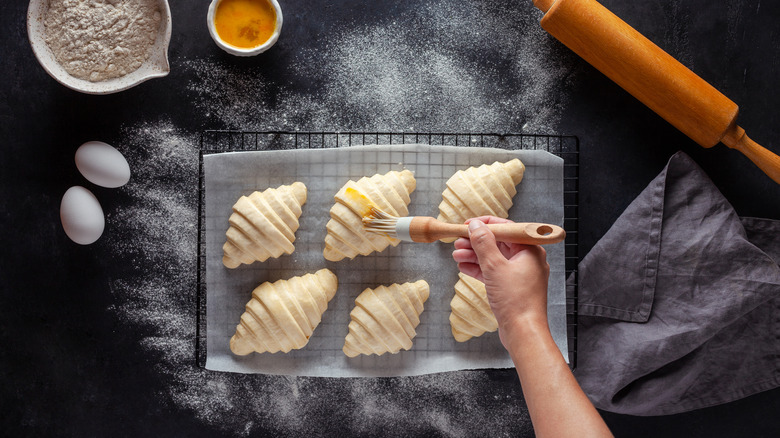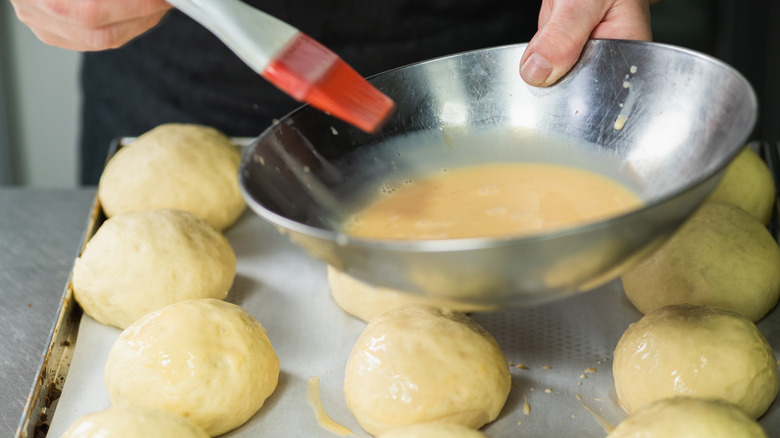The Proper Way To Use Egg Wash
Egg washing is the not-so-secret technique that can make the difference between a perfectly golden brown, delicious pastry crust or dinner roll and a lighter, not as attractive finish. The proteins in egg brown when they're exposed to the heat of the oven, and the bright yellow yolk also adds depth to the finish. We all know that browning brings flavor to food through the complex Maillard reaction, so skipping a proper egg wash also means less tasty baked goods. And although giving your pastry a quick brush with a well-beaten egg is the basic technique, there are some tips and tricks that will help you get the shiny brown crust of your dreams.
For instance, when you want a really dark finish, use only egg yolks in your wash. You can whisk them with a teaspoon of water to make the mixture easier to brush on. For a lighter color, use only the egg whites -– you'll get some shine with a hint of color. A simple beaten egg is the middle path, a nice medium brown with gloss. No matter which combination you decide on, making sure the egg is completely whisked is key so you can brush on an even layer.
Egg wash should be brushable and added at the last minute
Many recipes that call for egg wash will recommend diluting the egg with water or some form of dairy product. It's easier to brush on a diluted wash of course, but you'll also water down the color a bit. Using milk or cream adds more proteins and sugar in the form of lactose to the wash, which contributes to additional browning, too. Egg whites have a high moisture content, so they won't need water, just a very thorough whisking to break up the strands. You could also add a pinch of salt to your egg wash as you mix it up to get a looser texture. The salt unwinds the egg proteins, allowing the wash to be more fluid and easy to brush on.
Last but not least, timing matters. You should brush your dough right before it heads into the oven for the best results. Otherwise, the wash will sink into the dough, making it damp and soggy. It takes more heat to dry out wet dough, so you'll risk overbaking your goodies, which will cause your pastries to overbrown.

